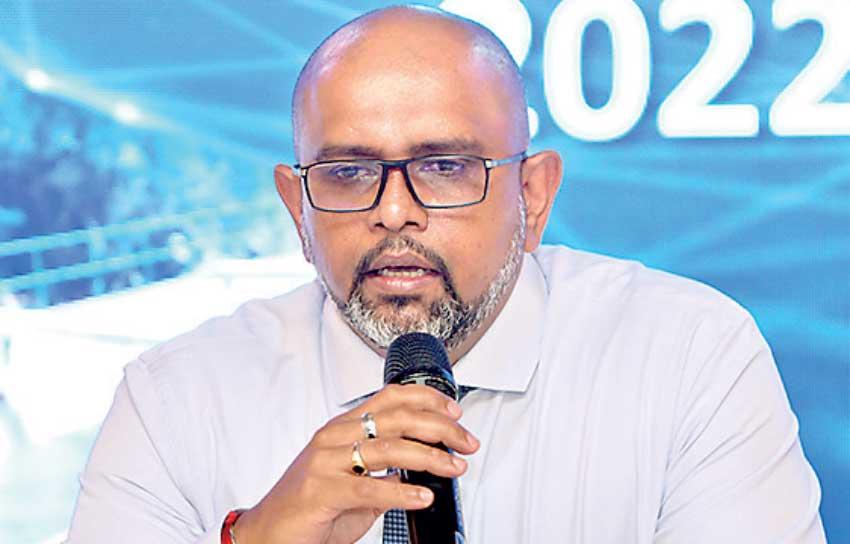25 Jan 2022 - {{hitsCtrl.values.hits}}

Thusitha Peiris
By Nishel Fernando
Sri Lanka’s Small Hydro Power Developers Association (SHPDA), which boats a combined installed capacity of 440MW, seeks a reasonable upward revision to feed in tariff to realise the remaining 150MW potential in the small and medium-scale hydropower sector, with 475MW worth of power projects being stuck at different levels, due to the government red tape over the past seven years.
“Although we were able to complete over 440MW small hydropower projects within a short period of 18 years, the authorities have failed to grant approval for any projects in our sector over the past seven years. If this was not the case, we would have been able to add 150MW to the national grid in that period,” SHPDA President Thusitha Peiris said during an event held in Colombo last Thursday to mark the 25th anniversary of the country’s grid-connected small hydropower industry.
“Currently, 475MW worth of power projects by 472 local entrepreneurs are held in various levels of approvals by the relevant authorities,” he added.
According to the SHPDA, the small hydropower developers are required to obtain approvals from 19 different government agencies and the average period to complete a project comes to around three and half years. However, since 2015, there has been no new Standardised Power Purchase Agreement (SPPA) to commission new private sector hydropower plants.
During this period, Peiris pointed out that the cost of capital goods has doubled while some entrepreneurs, who invested their own to develop new hydropower projects, have gone bankrupt.
“The entrepreneurs have received approvals years ago and they now have to revisit these approvals, as some of these time-bound approvals have already expired. What we want is a reasonable tariff regime in the current context, considering the sharp cost escalation in capital goods. Further, this backlog needs to be cleared. Specially, there are 27MW worth of projects, which are at advanced approval stages, where the energy permit has also been issued but they remain blocked for several years for no viable reason,” he said.
Currently, the feed in tariff rate offered under three tariff structures to small and medium hydropower plants averages around Rs.15 per KWH. The private sector-operated hydropower remains the cheapest power source for the CEB, while the tariff rate of thermal power remains high as much as Rs.47 per KwH.
However, Peiris stressed that the developers are in need of a reasonable new tariff rate, in order for new projects to become financially viable.
“The internal rate of return (IRR) at least needs to be 15 percent in order for these projects to become viable investments, so they can recover their investments within six to seven years,” he added.
He noted that a new feed in tariff also needs to accommodate other factors such as interest rate on loans, average inflation, which directly impacts operational costs of power plants and so on.
Therefore, he suggests that the new tariff rate needs to be around Rs.19-21 per unit.
Meanwhile, commenting on the impact of hydropower projects, he highlighted that the local value addition to hydro projects averages to around 60-65 percent, which is significantly higher than the local value addition to solar projects, which averages to only 5-10 percent.
Further, employment generation of hydropower projects is estimated at 988 employments for every one MW generated, which is the highest employment generation rate in the power sector.
Moreover, due to the high efficiency of the sector, Peiris pointed out that it remains one of the most reliable and cheapest power suppliers to the CEB.
Over the past 25 years, Sri Lanka’s small and medium hydropower sector has grown rapidly while setting industry standards and expanding into overseas territories, particularly to Africa.
19 Apr 2024 56 minute ago
19 Apr 2024 2 hours ago
19 Apr 2024 2 hours ago
19 Apr 2024 2 hours ago
19 Apr 2024 2 hours ago